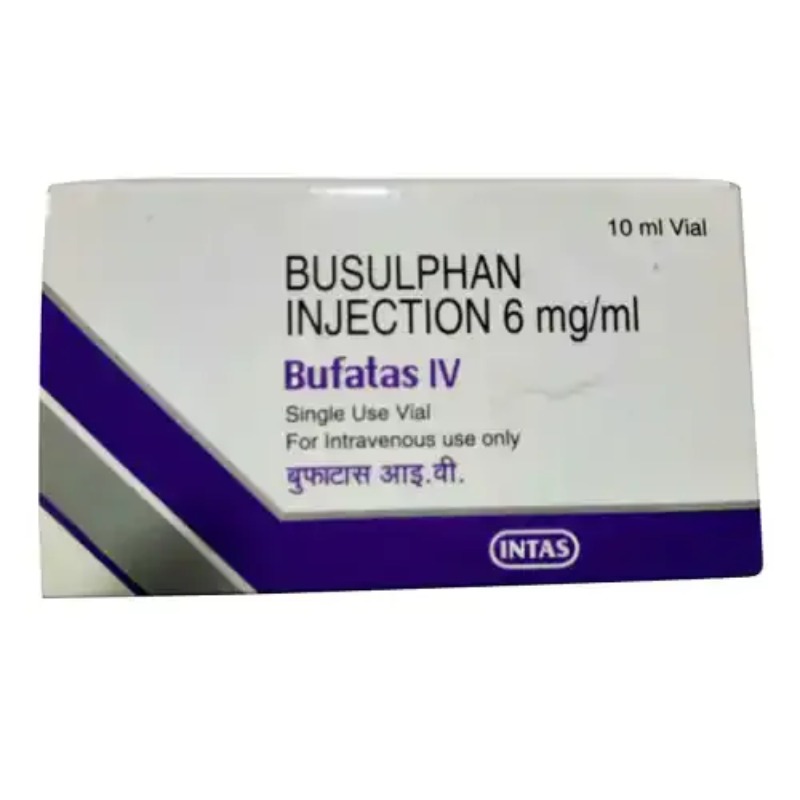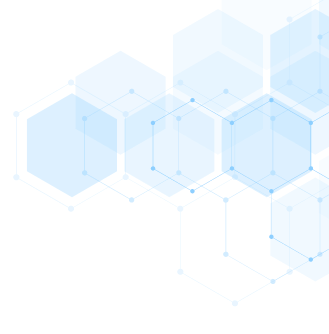DESCRIPTION
Busulfan
CLASSIFICATION Alkylating agent
MECHANISM OF ACTION
• Methanesulfonate-type bifunctional alkylating agent.
• Interacts with cellular thiol groups and nucleic acids to form DNA–DNA and DNA–protein cross-links. Cross-linking of DNA results in inhibition of
DNA synthesis and function.
• Cell cycle–nonspecific, active in all phases of the cell cycle.
ABSORPTION
Excellent oral bioavailability, with peak levels in serum occurring within 2–4 hours after administration. About 30% of drug is bound to plasma proteins.
DISTRIBUTION
Distributes rapidly in plasma, with broad tissue distribution. Crosses the blood-brain barrier and also crosses the placental barrier.
INDICATIONS
1. Chronic myelogenous leukemia (CML) (standard dose).
2. Bone marrow/stem cell transplantation for refractory leukemia, lymphoma (high dose). Use in combination with cyclophosphamide as conditioning regimen prior to allogeneic stem cell transplantation for CML.
DOSAGE RANGE
1. CML—Usual dose for remission induction is 4–8 mg/day PO. Dosing on a weight basis is 1.8 mg/m2/day. Maintenance dose is usually 1–3 mg/day PO.
2. Transplant setting—4 mg/kg/day IV for 4 days to a total dose of 16 mg/kg.
DRUG INTERACTION 1
Acetaminophen—Acetaminophen may decrease busulfan metabolism in the liver when given 72 hours before busulfan, resulting in enhanced toxicity.
DRUG INTERACTION 2
Itraconazole—Itraconazole reduces busulfan metabolism by up to 20%.
DRUG INTERACTION 3
Phenobarbital and phenytoin—Phenobarbital and phenytoin increase busulfan metabolism in the liver by inducing the activity of the liver microsomal system.
SPECIAL CONSIDERATIONS
1. Monitor CBC while on therapy. When the total WBC count has declined to approximately 15,000/mm3, busulfan should be withheld until the nadir is reached and the counts begin to rise above this level. A decrease in the WBC count may not be seen during the first 10–15 days of therapy, and it may continue to fall for more than 1 month even after the drug has been stopped.
2. Monitor patients for pulmonary symptoms, as busulfan can cause interstitial pneumonitis.
3. Ingestion of busulfan on an empty stomach may decrease the risk of nausea and vomiting.
4. Busulfan drug monitoring is important in the setting of allogeneic stem cell transplantation, as busulfan has a narrow therapeutic index, and
a specific busulfan drug exposure has been associated with improved clinical outcomes.
5. Pregnancy category D. Breastfeeding should be avoided.
TOXICITY 1
Myelosuppression with pancytopenia is dose-limiting toxicity.
TOXICITY 2
Nausea/vomiting and diarrhea are common (> 80% of patients) but generally mild with standard doses. Anorexia is also frequently observed.
TOXICITY 3
Mucositis is dose-related and may require interruption of therapy in some instances.
TOXICITY 4
Hyperpigmentation of skin, especially in hand creases and nail beds. Skin rash and pruritus also observed.
TOXICITY 5
Impotence, male sterility, amenorrhea, ovarian suppression, menopause, and infertility.
TOXICITY 6
Pulmonary symptoms, including cough, dyspnea, and fever, can be seen after long-term therapy. Interstitial pulmonary fibrosis, referred to as “busulfan lung,” is a rare but severe side effect of therapy. May occur 1–10 years after discontinuation of therapy.
TOXICITY 7
Adrenal insufficiency occurs rarely.
TOXICITY 8
Hepatotoxicity with elevations in LFTs. Hepatic veno-occlusive disease is observed with high doses of busulfan used in transplant setting.
TOXICITY 9
Insomnia, anxiety, dizziness, and depression are the most common neurologic side effects. Seizures can occur, usually with high-dose therapy.
TOXICITY 10
Increased risk of secondary malignancies, especially acute myelogenous leukemia, with long-term chronic use.
SPECIFICATION


Login To Comment